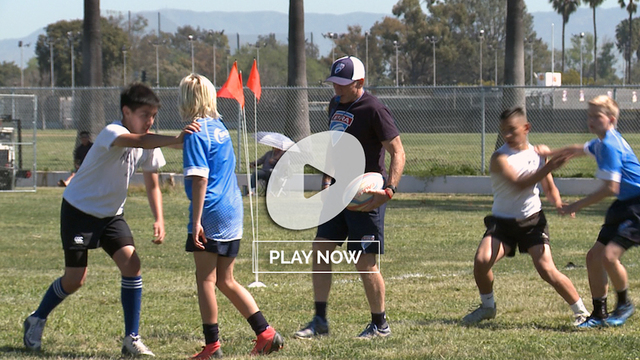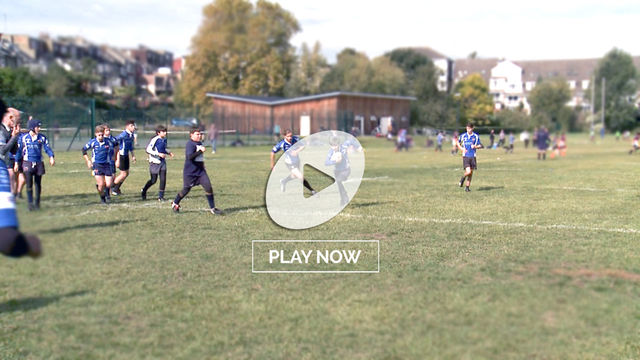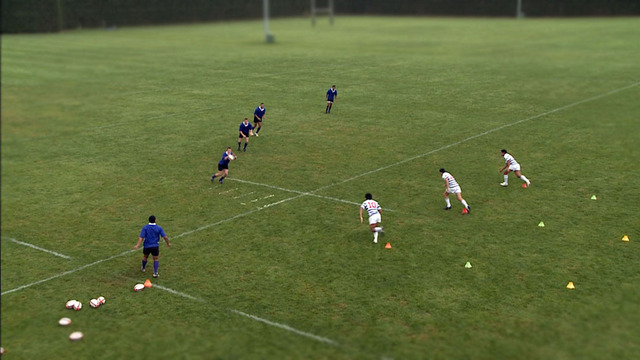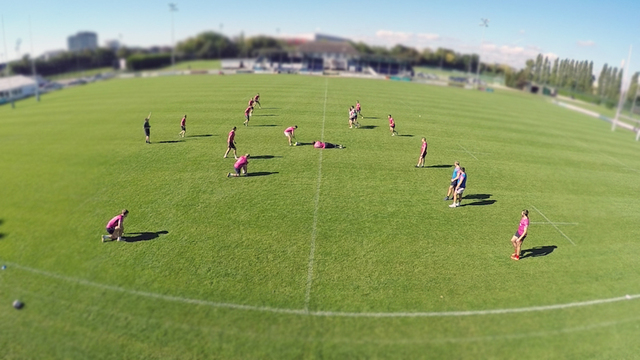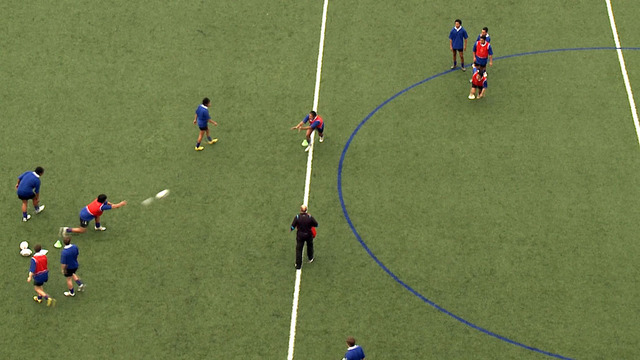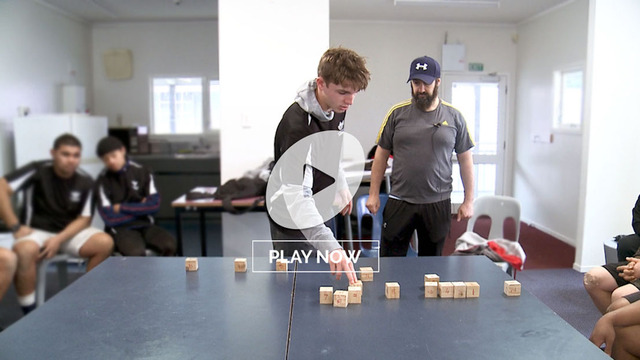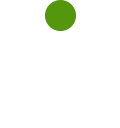One of the most significant law changes of recent times has been the rule governing grounding of the ball in-goal. Under the old law, if the ball was held up, the team in possession could start all over again from a feed at a 5m scrum. There was little or no risk attached to a plunge for the whitewash. The attacking side could keep the pressure on for long periods of time.
Under the new law, the ‘use it or lose it’ mindset now applies: if the ball-carrier cannot ground the ball, the outcome is relief for the defence via a goal-line drop-out:
12.12 [A] Play is restarted with a goal line drop-out when:
The ball is played or taken into in-goal by an attacking player and is then held up, grounded, or otherwise made legally dead by an opponent.
Attacking teams therefore need to be much clearer and more definite about their plans to cross the line, particularly from set-pieces like a 5m tapped penalty. On these occasions, the twin connected aims of showing the referee a clear grounding of the ball; and reducing the number of defensive bodies around it – potentially muddying the waters – are at a premium.
Shifting the ball away from the forwards quickly and smartly is a noble objective in the circumstances, and two recent games by the Michael Cheika-mentored Leicester Tigers showed how it can be achieved. The first example comes from the round two match versus Gloucester:
At the ‘snap’, two pods of forwards shuffle over to the open-side of the field, and the underlying theme is to change the point of attack more quickly than the defence can react to it. When the ball is shifted out of the line from Leicester #2, the crossing angles run by #8 and #10 create space for the score underneath defensive #13.
In the next round, Leicester used a similar move going in the opposite direction, to the short-side of the field:
<p.
Insert TRS shuffle 2
Summary
The set-up is even clearer from the view from behind the posts. The two forward pods of three perform their ‘shuffle’ over to the left before the ball is tapped, and three backs are ready to widen the point-of-attack, with [“3”] #15 Freddie Steward eventually dotting down in a sparsely-defended area near the corner flag.
In both instances it is easy for the referee to detect a grounding of the ball in-goal, and the risk of the ball being held up off the deck is minimized. Michael Cheika’s Leicester shuffle the deck of forwards and come up with a winning hand near the goal-line, twice in a row.



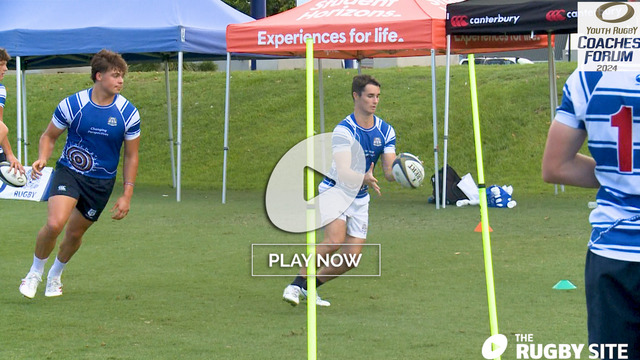
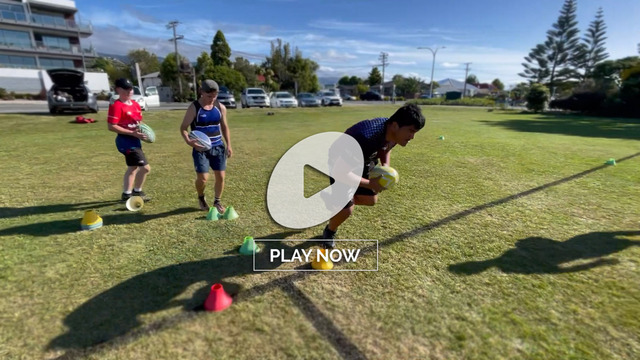

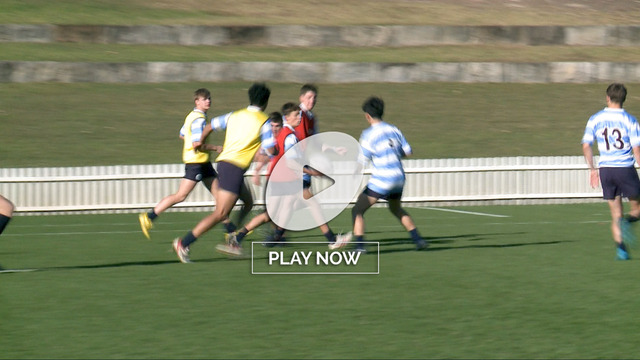

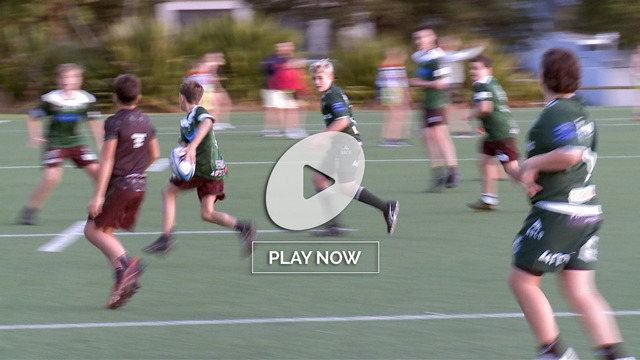
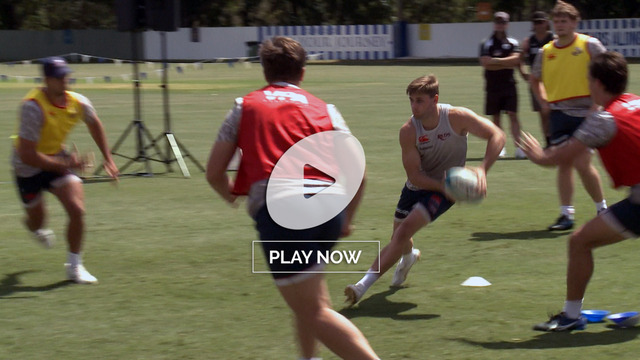

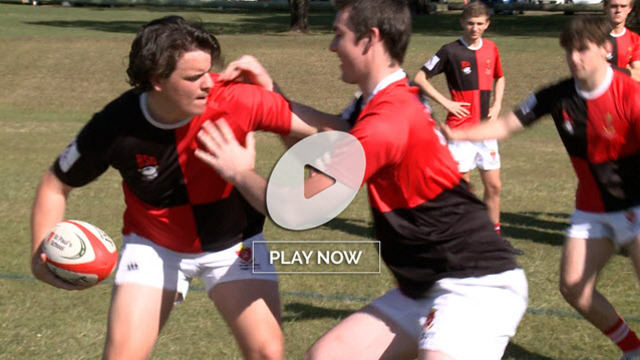
.jpg)
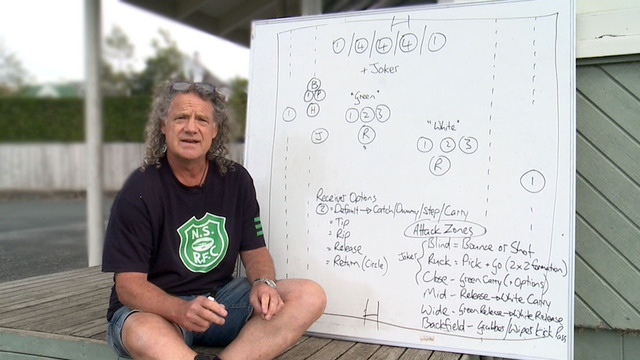
.jpg)
